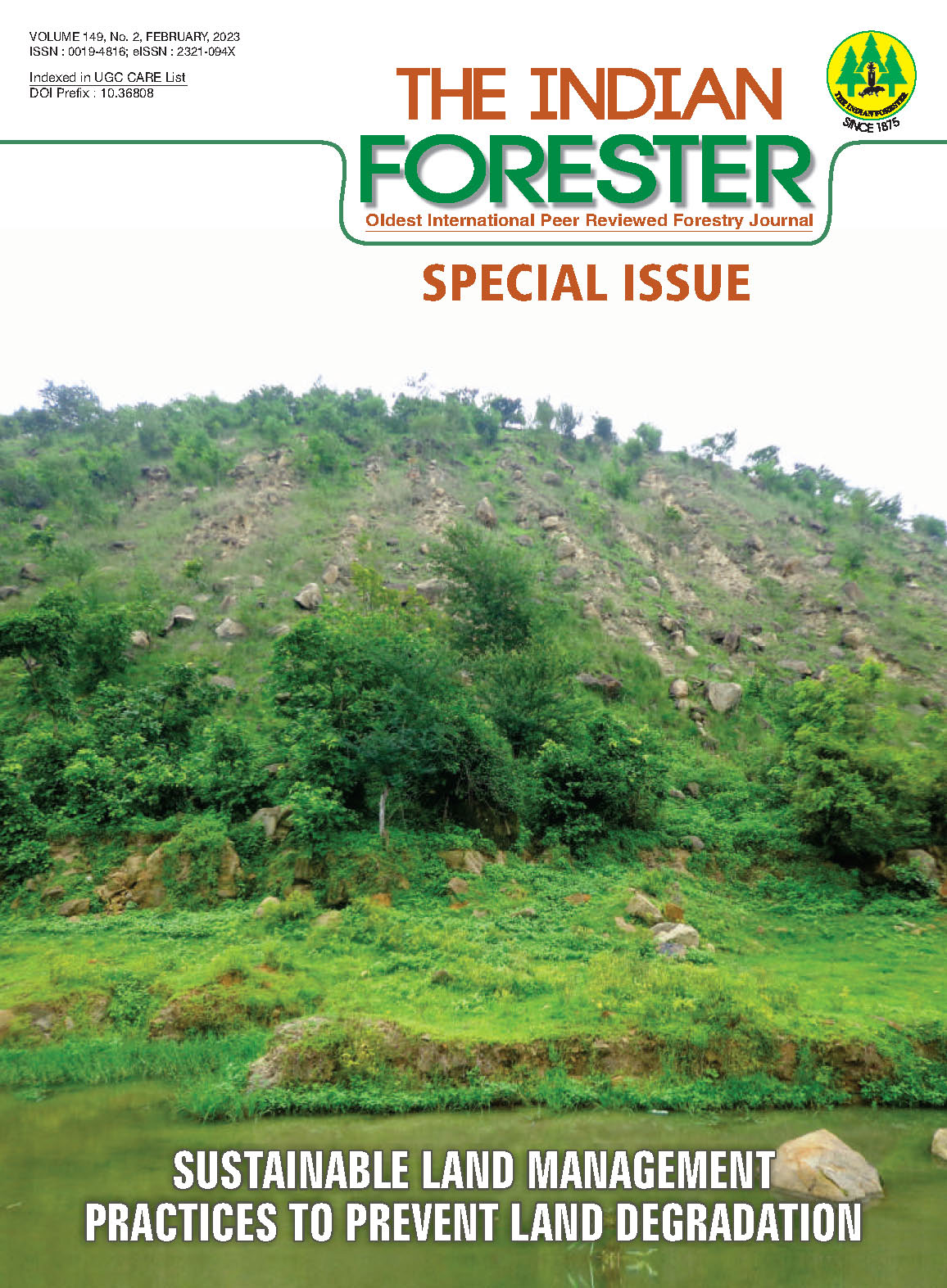Sustainable Utilisation and Conservation of Forest Resources through Different Land Management Practices in Dzongu, Eastern Himalaya
DOI:
https://doi.org/10.36808/if/2023/v149i2/169720Keywords:
Sustainability, Conservation, Agroforestry, Indigenous Community, Sacred Groves.Abstract
The paper deals with the tree composition and structure in the Cardamom Based Agroforestry (CBA), Field-Based Agroforestry (FBA), Private forests (PF) and Sacred Groves (SG) of Dzongu, North Sikkim, Eastern Himalaya. Traditional practices and knowledge about the use of tree species were identified. The highest tree density was observed in PF and the highest basal area cover was reported in SG. The maximum population structure was exhibited by PF and SG with better regeneration capacity. The tree species were reported to be highest in SG (43%), followed by PF (23%), whereas CBA presented the least or poorest regeneration. The FBA and CBA were characterized by the composition of tree species with ecological and economic significance for the local community. Although agroforestry supports livelihoods, the exploitation of trees also exerts pressure on the ecological functioning of the wild. The indigenous community 'Lepchas' cultural practice of maintaining SG within the village surroundings not only helps to conserve local resources but also strengthens the human-nature bond.Downloads
Download data is not yet available.
Downloads
Additional Files
Published
2023-05-04
How to Cite
Sinha, S., Bisht, A. K., Gaira, K. S., & Chhetri, P. (2023). Sustainable Utilisation and Conservation of Forest Resources through Different Land Management Practices in Dzongu, Eastern Himalaya. Indian Forester, 149(2), 157–163. https://doi.org/10.36808/if/2023/v149i2/169720
Issue
Section
Articles
License
Unless otherwise stated, copyright or similar rights in all materials presented on the site, including graphical images, are owned by Indian Forester.





